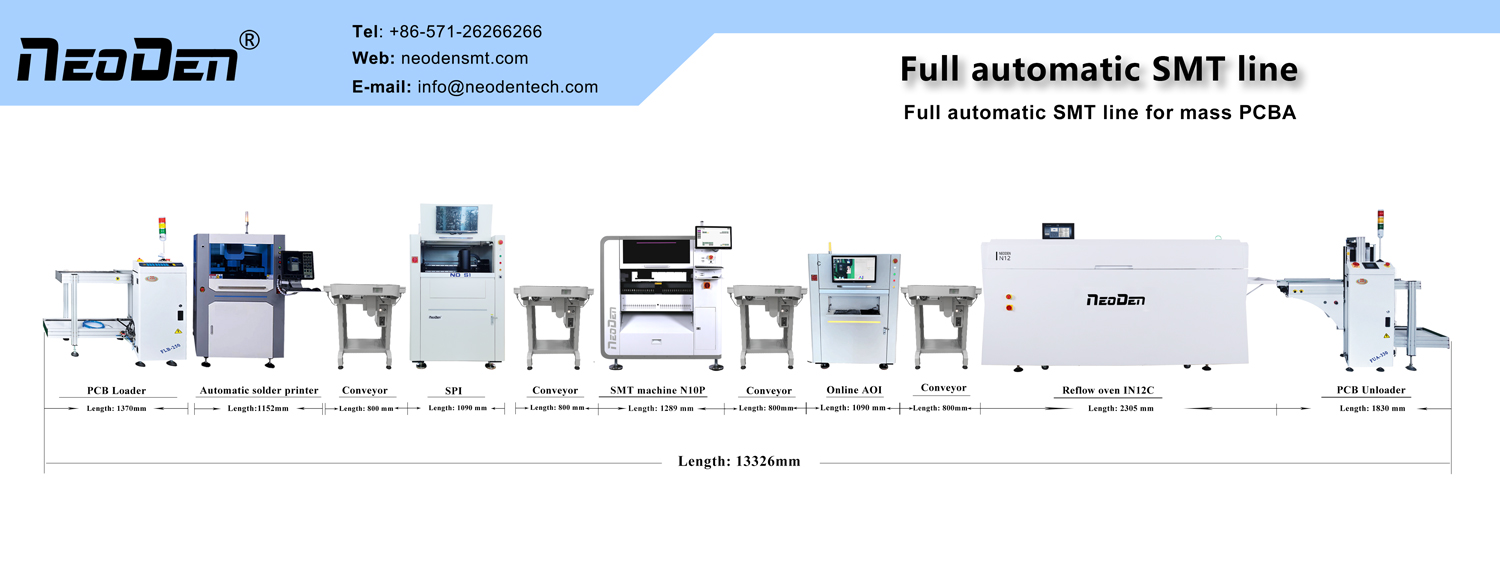INTRODUCTION
Surface mount technology (SMT) is a process of mounting electronic components on the surface of a printed circuit board. It pastes various electronic components onto the PCB through a precise placement process to complete the connection and assembly of circuits. Compared with the traditional plug-in assembly, SMT has the advantages of small size, light weight, high productivity and reliability, and is widely used in the manufacturing process of cell phones and other electronic devices.
SMT placement processing accuracy refers to the accuracy of component placement in the SMT machine placement process. It covers the positional accuracy of the components on the PCB, rotational accuracy and placement pressure and other aspects. High-precision placement can ensure the correct connection between components and reduce problems such as poor soldering and short circuits, thus improving product reliability and performance.
This article will take you together to explore the precision standards of SMT SMD processing and its impact on product quality.
I. The concept of SMT chip processing accuracy
SMT machining accuracy usually refers to the ability of electronic components to be accurately placed into a specified position on a PCB. This includes the component’s X-Y axis positional accuracy, angular offset accuracy, and Z-axis height control accuracy. Control of these accuracies is critical to ensure precise alignment between components and pads to avoid defects such as misalignment, bridging, or shorts.
1. X-Y axis positional accuracy
X-Y axis positional accuracy refers to the positioning accuracy of components in the plane direction. This is usually measured in microns (μm) and reflects the deviation between the center of the component and the center of the PCB pad. Highly accurate X-Y axis positioning ensures that components are perfectly aligned with the pads when soldering, avoiding soldering problems caused by misalignment.
2. Angular Offset Accuracy
Angular offset accuracy refers to the rotational deviation of a component from its ideal position. This deviation is expressed in units of angle (°). Higher angular offsets may result in mismatches between component pins and pads, thus affecting soldering quality.
3. Z-axis height control accuracy
Z-axis height control accuracy involves the accuracy of the height at which components are placed on the PCB surface during the placement process. This plays a key role in preventing components from being placed in the process of excessive pressure or position too high to affect the welding effect.
II. The role of SMT chip processing accuracy
- Improve product quality: High-precision SMT processing can ensure that components are accurately placed on the PCB, reduce welding defects and electrical connection problems, thereby improving the overall quality of the product.
- Enhance product performance: Accurate SMT processing can ensure optimal connection between components, reduce loss and interference in the signal transmission process, and thus enhance the electrical performance of the product.
- Enhance production yield: Highly accurate SMD processing means fewer production defects and less rework, which helps to improve production efficiency and reduce production costs.
- Extend product life: High-quality SMD processing ensures product stability and durability, thus extending product life.
- Reduce rework costs: reduce welding defects and electrical connection problems, can significantly reduce the cost of product rework
III. Improve the accuracy of SMT chip processing strategy
- Equipment upgrades and maintenance: Select high-precision chip mounter, and ensure that the equipment has good performance. Regular maintenance and repair of the chip mounter, including cleaning, lubrication, calibration and other work to maintain the stability and accuracy of the equipment.
- Process optimization: Optimize the process parameters of the mounter, such as SMT suction nozzle pressure, nozzle speed, placement speed, placement height, etc.. Reasonable setting of these parameters can improve the placement accuracy and repeatability.
- Training and management: Skill training for operators to improve their ability to operate the mounter and adjust process parameters. At the same time, quality awareness education should be strengthened to ensure that the operators strictly comply with the process requirements in the production process.
Conclusion
SMT placement processing accuracy is a crucial parameter in the electronic manufacturing process, affecting product quality, reliability, production efficiency and cost control. With the development trend of electronic products, the requirements of SMD processing accuracy are also increasing. Enterprises need to adopt advanced placement equipment and process control methods to ensure high-precision placement processing, so as to occupy a favorable position in the competitive market. By improving the precision of SMT placement processing, enterprises can not only improve product quality, but also reduce costs, improve production efficiency, and provide customers with more reliable electronic products.
Quick facts about NeoDen
1) Established in 2010, 200 + employees, 27000+ Sq.m. factory.
2) NeoDen Products:Different Series PnP machines,NeoDen YY1,NeoDen4,NeoDen5,NeoDen K1830 ,NeoDen9,NeoDen N10P;Reflow Oven IN Series,as well as complete SMT Line includes all necessary SMT equipment.
3) Successful 10000+ customers across the globe.
4) 40+ Global Agents covered in Asia, Europe, America, Oceania and Africa.
5) R&D Center: 3 R&D departments with 25+ professional R&D engineers.
6) Listed with CE and got 70+ patents.
7) 30+ quality control and technical support engineers, 15+ senior international sales, for timely customer responding within 8 hours, and professional solutions providing within 24 hours.
Post time: May-06-2025


